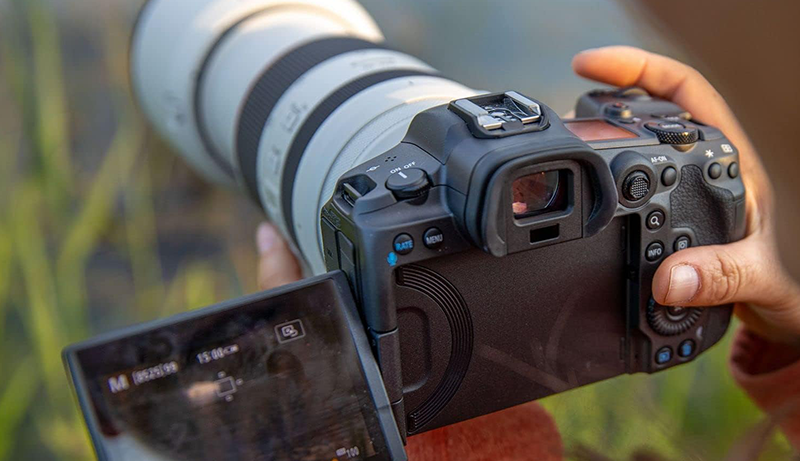The best multipattern condenser microphones are those from the AKG C-Series. Two variations exist. The AKG C414 XLII is one of them, while the AKG C414 XLS is the other. These two models’ capsules are distinct from one another in addition to their many visual variances.
The XLII has a presence boost, which is quite similar to the C12 function of the AKG, however, the XLS has a somewhat more transparent-sounding microphone. The XLII is also rather complimentary of a number of sources.
In this review, we’ll concentrate on the C414 XLII and examine how it varies from the other model.
Sound Performance
You have the option to quickly switch between numerous polar patterns with the AKG C414 XLII. This function is really useful. This microphone offers excellent sound quality as well.
Both the C414 XLS and XLII are renowned for their outstanding clarity and fantastic sound character. In fact, the XLII sounds much better than the XLS advertisement, which is why vocalists prefer it more. Both the C414 XLII and XLS have shimmering treble frequencies.
The sound is very clear and places a lot of emphasis on detail. These mics are necessary if you play instruments with a lot of texture and detail.
Particularly the XLII can perform well with your voice, electric guitars, acoustic guitars, and drums. You may also read my evaluation of the excellent and adaptable Shure SM81.
Coloration

You also need to take into account some colors, though. In its cardioid pattern, XLII has a little scoop between 1 and 2 kHz.
If necessary, you may also raise it to 5kHz. This function enables you to increase the sense of spaciousness and clarity while bringing forth a strong vocal presence.
Moreover, the mic rolls off some frequencies between 6 and 7 kHz, which might have a beneficial impact by minimizing any sibilance effect.
Although it might smooth out the voices, some of you might prefer a sound that is less colored and more neutral. You can adjust that while mixing to meet your needs.
Recording studio
You must take a step back from your C414 mic when recording to avoid any booming proximity effect. To record sound that is as loud as possible, you must increase your settings.
You will capture more background noise if you do this. You shouldn’t choose the C414 if your recording space isn’t adequately soundproofed. For beginners without sound-treated rooms, dynamic microphones are suggested.
Yet since it is so sensitive, the C414 is more affected by it. Even undesired noises can be captured in great detail by it.
Build Excellence
Both the C414 XLII and XLS retain their predecessors’ traditional shapes. These microphones are small and have a box-like design.
Although the XLII has a simple appearance, its gold grille makes it look spectacular in the studio. You may still leave a lasting impact on your clients and partners even in a tiny studio.
The microphone’s base is substantial and weighty, but the gold grille falls short in this regard. Although it may appear lovely, the grille is actually rather sensitive.
The grille on this microphone is easily damaged, which has been a complaint from the majority of consumers. Use extreme caution when handling your microphone.
Any dents can ruin the appearance because the grill is directly in front of the mic. But, the mic’s CK12 Generation 2 nylon capsule, which is hidden under this grille, is what gives it its high-quality audio.
As the capsule is too valuable to be handled carelessly, the manufacturer used elastic mounting for the most recent versions to protect it from vibration and impacts. Simply said, keep your C414 in your possession. It could withstand a few spills, but it is not a workhorse that is impervious to harm.
A fusion of traditional and contemporary

The C414 XLII and XLS are both premium microphones that combine cutting-edge technology with a vintage aesthetic. On a technological and useful level, the design offers several significant advancements over the earlier generations.
Although being a premium microphone, the C414 is fairly affordable when compared to other high-end microphones from other companies. This microphone’s new control scheme is well-organized and simple to use.
Together with this microphone, your purchase also comes with some very helpful extras including a sturdy flight case, a good pop-shield, and a well-thought-out shock mount. Although maintaining their traditional appearance and tone, the new models offer a dynamic spectrum of sounds.
Controls
Its elegant gold grille has a selectable switch with a 9-pickup pattern just underneath it. With a simple button click, you may alternate between 5 distinct polar designs.
The same switch may be used to select 4 hybrid patterns from each of them. There is an LED light directly below the switch that lets you see the patterns you have chosen.
This LED light strip has a highly useful function that can identify peak overloads and clipping. Even a slight distortion from clipping will cause the LED to change from green to red.
Whether you are utilizing a really loud source, such as a blaring guitar or drums, this tool will let you swiftly change your settings properly.
Back controls
The C414 features two separate switches and Lights beneath them on the rear. You may select from four different settings on the pre-attenuation pad on the left, including -18 dB, -12 dB, -6 dB, and 0 dB.
When used in conjunction with the front-mounted clipping indicator, you may instantly identify distortion in your signals and pad them to add extra headroom as needed.
This microphone features a low-cutting filter on the right side. To remove any extraneous low end from your signals, you may quickly choose between 160Hz, 80Hz, 40Hz, and 0Hz. It can also be used to combat the unwelcome proximity effect when dealing with a boomy recording source.
Arctic Patterns

Polar patterns, often referred to as pickup patterns, can be seen as two-dimensional graphs on a 360-degree circular plot. Nevertheless, your microphone’s capsule can really record sound in three dimensions.
By adjusting the output level from the omnidirectional mic and mixing it with various output levels from the Figure-8 pattern, several polar patterns are created.
On C414 there are mainly five different polar patterns, but you may also choose and switch between any two nearby designs. With C414, there are nine different polar patterns possible in total. Four are hybrid, and five are primary. The first five polar patterns of C414 are as follows:
Omnidirectional
This polar pattern is excellent for room and moving sounds.
Wide-cardioid
This pattern is employed to record sounds coming from larger sources that are coming from a certain direction, such as a choir or live band.
Cardioid
The majority of vocals and instruments are typically recorded using the cardioid polar pattern.
Hypercardioid
It works well for greater separation of more focused sound sources and for reducing outside noise.
The Figure-8 pattern is useful for stereo recording and the ideal choice when using two vocalists or M/S recording.
The C414 is the ideal choice for capturing clear sounds in a variety of settings because to its ability to switch between various polar patterns. This is the specific reason why the C414 has evolved into a necessary piece of gear for every studio. Whatever your needs are, you’ll find the C414 to be a good selection.
Polar pattern lock mode is available. The pattern you are working on can be locked to avoid any unintentional switching. Simply keep one of the selector’s arrows down for around two seconds to lock the pattern.
As you change between the patterns in this lock mode, an LED light will briefly illuminate. You won’t be able to change the design since your pattern is locked, it will say.
You must once more hold down one of the arrows for two seconds to unlock your microphone and disable the lock mode. Now you can change the patterns once more.
AKG C414 Advantages

- The AKG C12 was known for its timeless sound, which the C414 can maintain.
- A top-notch switching system with LED indicators lets you know which polar pattern is active.
- Extra-wide features appear with the cardioid polar pattern.
- You also get high-quality accessories with your purchase.
- To work in various situations, there are five separate polar patterns and four different hybrid patterns.
- For greater sound management, there are three distinct attenuation settings.
- You can be sure to catch all the subtleties of your source by using a wide frequency range. Your experience with this mic will be as transparent and linear as possible.
- Also, the microphone has a bass-cut filter and will alert you to any general problems in even the smallest settings.
Drawbacks of AKG C414
- LEDs are not very helpful for covert usage in movies and television programs.
- Because of its extraordinary sensitivity, it can pick up any studio noise. As a result, if your room is not soundproof, this microphone is not the best choice for you.
Conclusion
Several well-known sound producers, recording engineers, and performers have favored AKG. And for more than 65 years, it has contributed to the development of the most recognizable sounds.
The engineers that created AKG are aware of what a real recording artist needs. Depending on your recording needs, you may choose from nine distinct polar patterns. Four of them are hybrid, while five are primary.
For the improved close-up recording of instruments with high output levels, you may also experiment with three different attenuation settings. The microphone also has three separate bass-cutting filters to minimize wind noise.
It aids in eliminating any proximity effect or stage vibration. With its LED, the microphone can also notify you when an audio peak has been detected and can even pick up the smallest audio peaks. Our guide to the AKG C214 vs AKG C414.





Leave a Reply